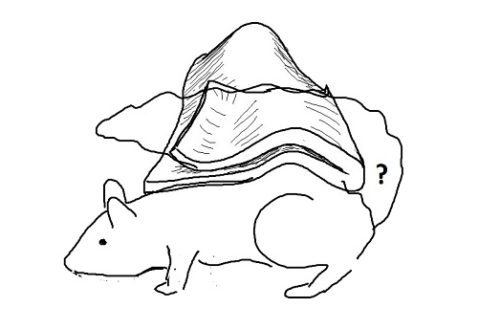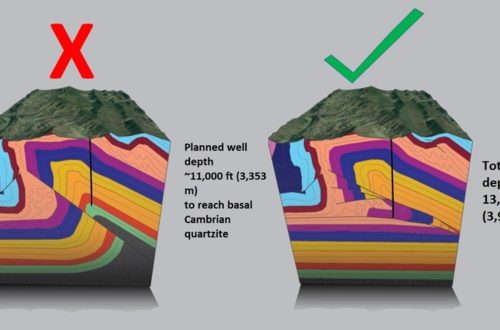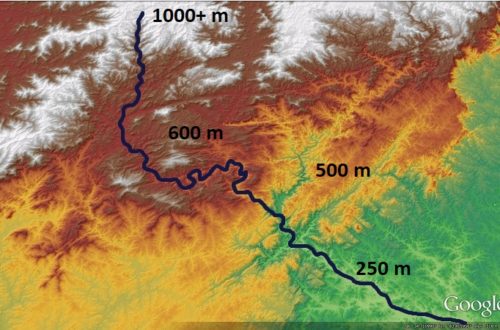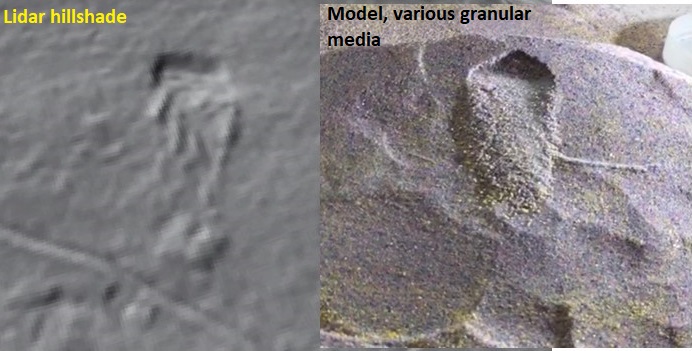
Blowout landslides, part 2: Material movement, and did anything actually “blow out?”
by Philip S. Prince
“Blowout” is certainly a peculiar name for a type of slide, but the lidar signature of blowout-type landslides legitimately gives the impression that a force from inside the hillside pushed material out. Observers of these failures developed the same impression, and even a basic physical model (below, right) of this failure style ends up looking like a big hole on a slope that soil spewed out of:

So, what actually happens when these slides occur? I have not personally witnessed one, but I think that a look at details of failure surface shape and the behavior of saturated soil during failure can be used to figure out why blowouts appear to “blow out” instead of just slide. In a second rare move for this page, I again link to an original post on the Appalachian Landslide Consultants site, which presents a host of sketches, a GIF of the model above, and a link to YouTube video of the actual New Zealand slide screenshotted below, which offers insight into the details of blowout material movement. The link can be found at the end of this post.
The most interesting part of this screenshot is the group of small trees being struck by fluidized slide material from the New Zealand failure–specifically the fact that they aren’t being knocked over!
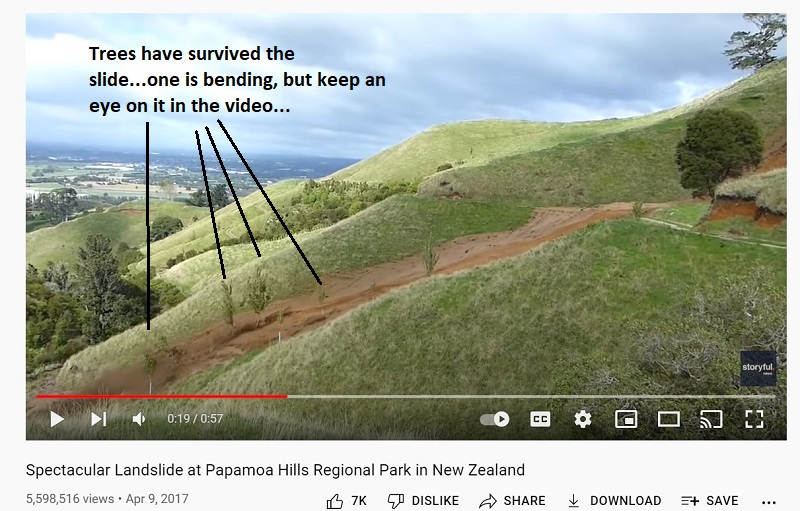
Lack of disturbance of the slopes below blowouts was remarked upon by both Eisenlohr (1952) and Hack and Goodlett (1960), with Hack and Goodlett going to the length of determining just how small of a sapling tree could survive a blowout strike in their study area. I have personally only seen one recent (1 year old) blowout in the field, but it presented the same intriguing lack of slope damage as observed by the earlier authors elsewhere in Appalachia. The photo below shows numerous small saplings killed by the blowout that were not uprooted or even flattened. Most of the tiny trees indicated below are less than 1/2 inch (1.27 cm) in diameter, and while they were damaged sufficiently to be killed, their modest root systems were clearly up to the challenge presented by the blowout material. Their root systems were not even exposed by physical removal of the uppermost soil horizon, which appeared essentially intact. The slide scar is visible in the background.
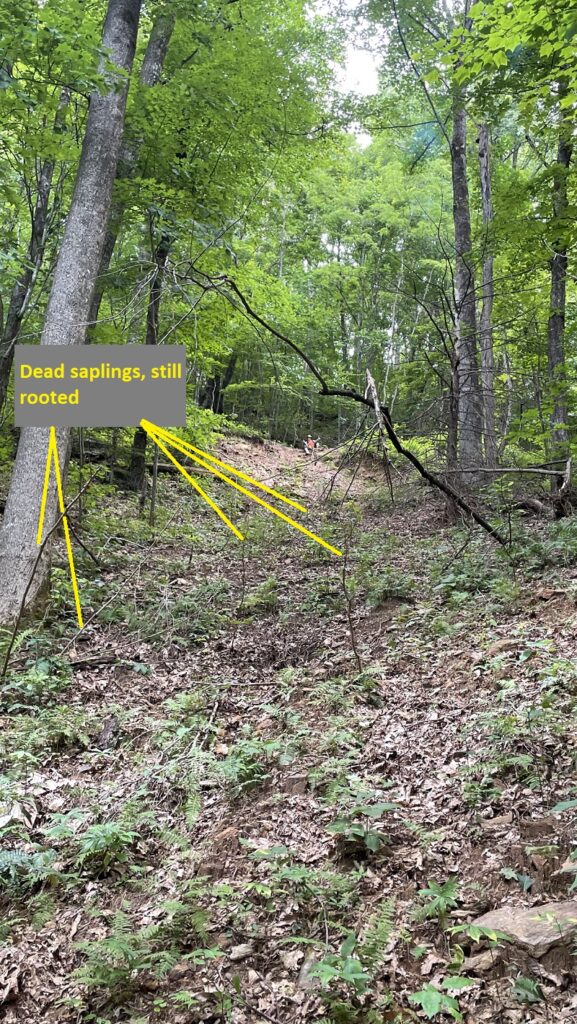
Preservation of small vegetation like this presumably results from extreme fluidization of the sliding–or more appropriately, flowing–mass, which moves like a slurry. Fluid or not, the slide material still contains large clasts, so the little trees presumably avoided these. The image below shows a detail of the colluvium involved in the failure, which exposes the bedrock colluvium contact. Some amount of fill was involved as well; just how much was unclear during this field visit.

The scar left by this blowout also provides a look at the flat area that creates a lip at the base of blowout failure scars. Rapidly sliding, saturated material obviously moved up and over this lip without degrading it. This path would have caused the material from high in the failure scar to “ramp” out of the scar and fluidize, particularly if it accelerated quickly after initial failure. If observed from downslope, I’m sure this does indeed create the impression of material spewing out of the slope. The images below show the failure scar with and without annotation. Also notable is the seep/wet area, which persists here even in dry weather.
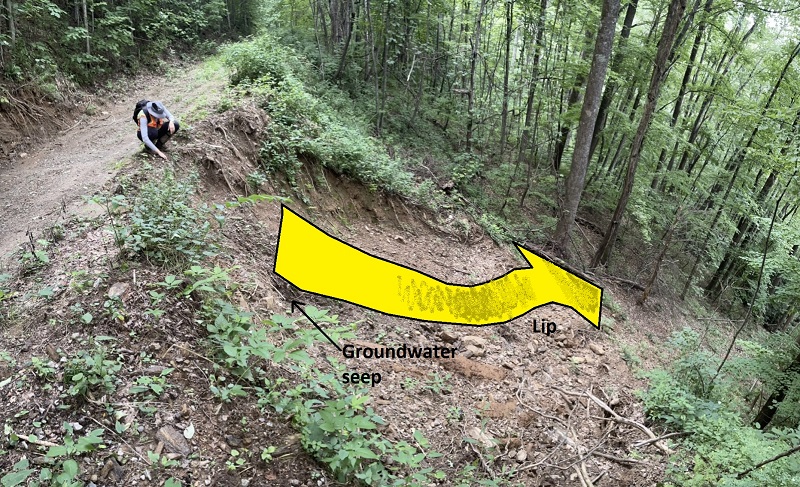
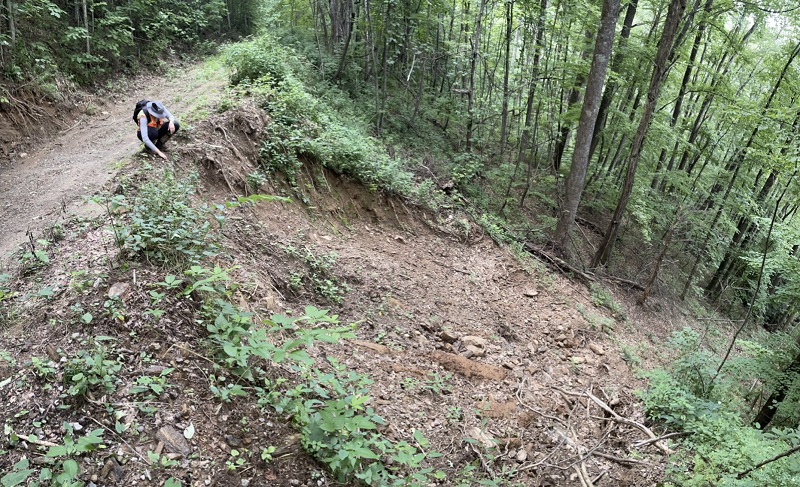
Considering this failure in comparison to the New Zealand failure is interesting, and I presume the degree of fluidization seen in the New Zealand failure likely occurred here to allow preservation of the sapling trunks downslope. Check it all out at the link below.
Link to second blowout post on Appalachian Landslide Consultants, PLLC page


